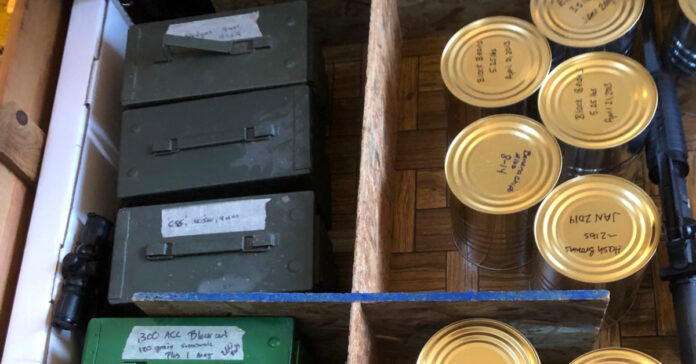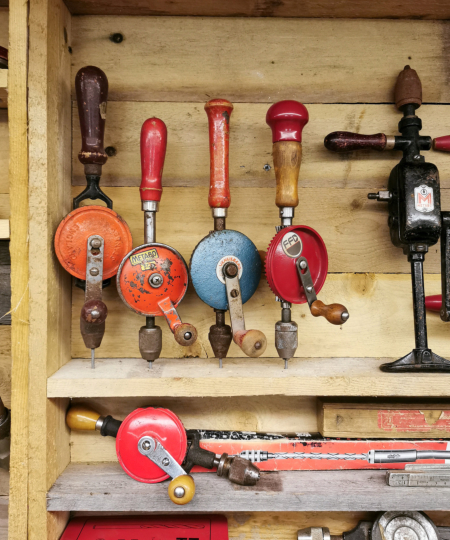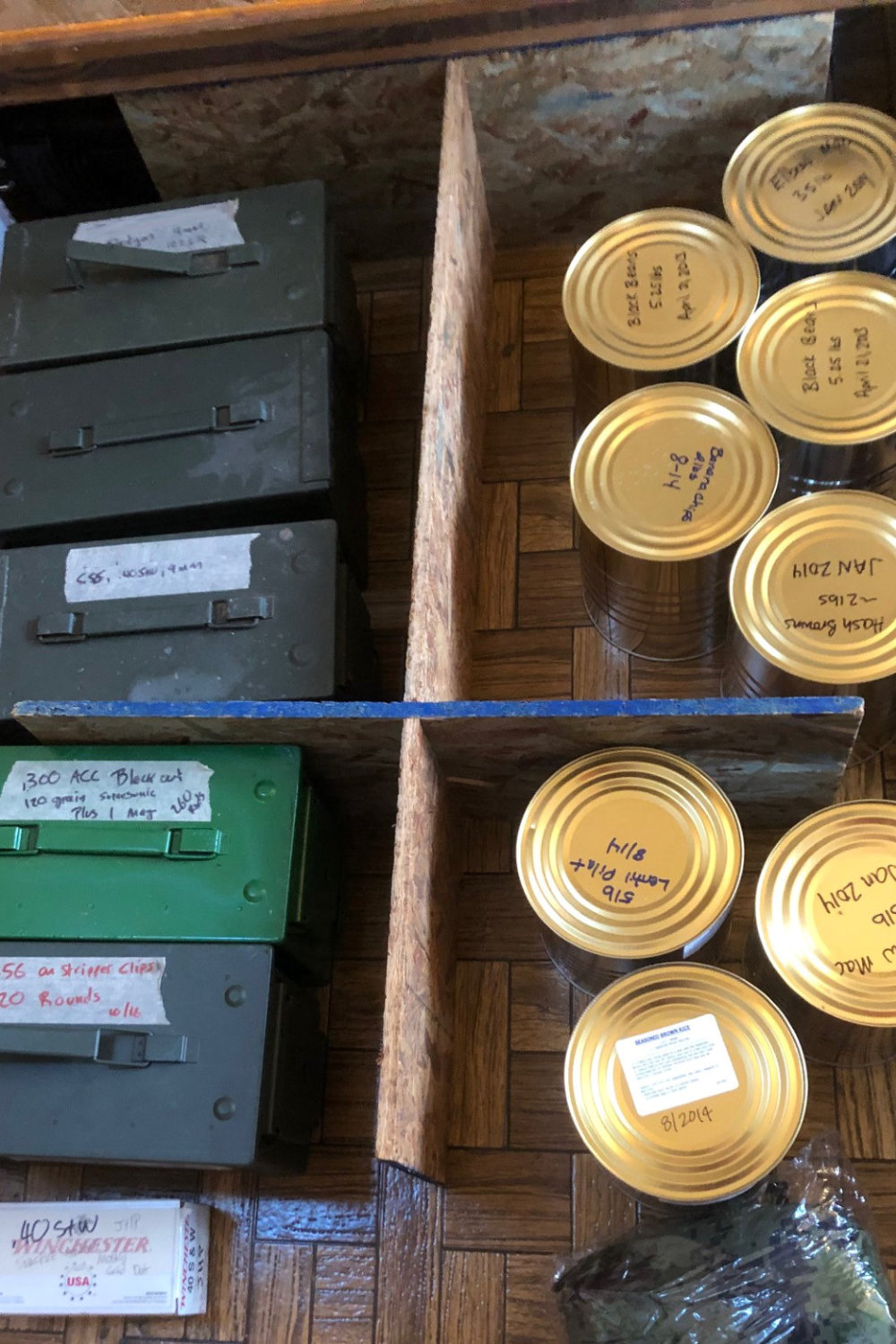
When it comes to prepping and stocking up, I have often talked about “the big three,” meaning food, water, and shelter. I also address what I call “the next three,” which are self-defense, medical/first aid, and communications. Today we’re going to talk about things that are probably not on anyone’s top ten list. In fact, they may not even be on their top 100 list, but all of them are useful in a long-term grid-down situation.
Keep that last part in mind. These might not be useful in a local or regional disaster that lasts a few days, but I predict you wish you had these if you end up in a long-term TEOTWAWKI scenario. To some extent, it assumes you are in a rural-ish area where you have to work outdoors. I think that’s a reasonable assumption because that is where the highest number of survivors are likely to be found.
Scissors and Similar Cutting Tools

In a post-SHTF scenario, you will need to cut things and your knife isn’t always the best tool. You will want scissors, shears, loppers, pruners, wire cutters, fencing pliers, and other devices that use opposing blades for cutting. We have scissors in our desks, but also in our sewing bag, workshop, and kitchen, but who puts one in their bug out bag? (Maybe EMT shears). For the garden you will want pruners and loppers. In the workshop, wire cutters, tin snips, and fencing pliers will be useful.
Not only are these items easy to use and convenient to have on hand, they are also difficult to make by hand. Yes, a talented blacksmith could make them, but with difficulty. Someone might be able to cast the two components, but it would require a great deal of handwork before you had a finished tool. So stock up on these things now, especially pruners and clipper you would use to harvest garden vegetables and prune berry bushes and fruit trees. Not only will you be able to make good use of these after the SHTF, but extras might make valuable trade goods.
Plastic Buckets
The generic 5-gallon pail is super useful, especially if you paid the extra dollar or two for the lid. I use them to carry water to the chickens, to carry food to refill their feeder, to store grains, and I have a separate set of buckets I use in our honey harvest. I also have one with a canvas liner loaded with pockets I use to tote my tools around, and we made our chicken slaughtering funnel from one.
If you need to carry water, you need buckets with lids to prevent spills. They are easy to fill up and can ride in a cart or wagon if you can’t carry one in each hand. Lids are also good if you want to seal something in to keep bugs or other vermin out.
If you go out to harvest wild foods, a pail can hold your haul. And if you have a surplus of buckets, you can drill holes in the bottom and use them as planters. Some people grow potatoes in them.
We also have some two-gallon buckets. We use them to hold kitchen scraps headed to our compost pile, and it’s a good size for harvesting berries.
Sure, you can buy them at many big box stores, but ask your grocery store’s bakery. They might give them away or sell used ones for a couple of bucks.
Keep in mind that while the white ones are usually food safe, the various color models may not be. If you are planning to use it to hold food or haul water, make sure you are getting a food-safe model.
Ponchos
If you don’t have a Gore-Tex rain suit, I think a military poncho is your next best form of rain gear. I wear mine to do chores every time it rains, which is often.
The military ponchos are heavy duty, often made from ripstop nylon. I’ve been using my current copy since before 2010. I recommend you spend the extra for a military grade poncho and not just a knockoff. Here’s what looks to be a good one.
I keep a cheaper PVC poncho in my vehicle emergency kit. It will be useful if I have to change a tire in wet weather or if I have to walk home.
Although not made for snow, in a pinch, your poncho can provide a hood and an extra waterproof and windproof layer over your clothes.
Mud Boots
These boots are more than galoshes or cheap rubber boots like you might buy your kid. They are work boots with a heavy duty sole, a seamless rubber boot that goes about six inches up, and a neoprene upper that goes to the top of your calf. Every inch of them is waterproof.
I wear these when it is raining, when I work in the chicken coop, anytime it’s muddy, when I am working in or around one of our many streams, etc. My wife wears hers when she does all of the above, but also when we go hiking and she expects to ford a stream or it’s been wet out. And why not? They have a Vibram sole. When worn with my poncho, the only part of me that gets wet is a two-inch strip above the boot where the poncho doesn’t quite reach. As an added plus, I expect they would have a good chance of stopping a snakebite.
Both our boots are a European brand I’ve never seen since, which is a shame because they are five years old and I know they will eventually wear out. You can buy them in basic black like ours or get a camouflage set made for hunting. If you live in a cold area, get a standard pair for the warmer weather and an insulated pair for winter.
In any case, they are super useful on and around the homestead, and I expect their usefulness will only increase if the SHTF. In fact, if someone told me TEOTWAWKI was coming on Tuesday, I’d run out and buy an extra pair on Monday.
Ammo Cans
I probably have fifty ammo cans. I used to buy surplus cans, clean them up, and repaint them. These days, the surplus ones are harder to find and more expensive, so I usually buy new ones from Harbor Freight where they are at least a third less expensive than they are at gun stores and Bass Pro.
The very characteristics that make them useful for storing ammunition make them useful for storing other stuff. For example, they are waterproof, durable, and have a handle for carrying. You can also use them to make a faraday cage or a cache.
They are also somewhat low profile. If you see an old, scarred ammo can in someone’s workshop or barn, you don’t immediately think “Ooh! I wonder what is in there? I think I’ll steal it.”
The .50 caliber size is my favorite, but I have some .30 caliber cans as well. I used to have some large brown ones the size of a small piece of luggage. I think they originally held mortar shells. They were less useful and I ditched them before the move. The flat cans that held 20mm shells are a nice size, but can be difficult to find.

A Hand Drill
Among my Ryobi battery powered tools are a drill, a hammer drill, and a driver. I also have at least one corded drill. Sadly, they may not work after a SHTF event, unless I can rig up some solar charging. A drill that works on muscle power will come in handy.
Many people have hammers and wrenches, and even hand saws, but how many have hand drills? I got both of mine from my father, and I expect he got one of them from his father. It looks like it could have been used to drill holes for pegs when doing timber frame construction of barns at the turn of the century.
Granted, it will be less useful than your boots or a bucket, but when you need to drill a hole to build or repair something, you will be glad to have a manual hand-crank drill.
A Barometer
We always had a barometer in the hallway while growing up. I looked like the steering while of an old sailing ship. Every day, my dad would tap it and make a weather prediction.
I’ve owned a barometer for at least 25 years. It’s part of a set that includes a humidity gauge and an old fashioned thermometer. I don’t recall how I came across it, but it hangs on our wall, and I glance at it daily and give it a tap once in a while. I find it is not a perfect weather predictor, but it can sure tell you when a low pressure system is coming in or when you have a high pressure system overhead. When the pressure changes rapidly, I know to hang on to my hat and make sure I didn’t leave the car window open.
When your phone app or Wi-Fi-enabled weather station stops working, a barometer is the best weather indicator you will have. Without one, you’ll have to rely on that “red sky at night” cliché.
Thermometers
This is right up there with a barometer. I went through two different digital thermometers that displayed the indoor and outdoor temperature before I gave up and got the old model with two tubes of mercury. It’s worked ever since and has no batteries to go dead or waterproof seals to fail.
Those “old fashioned” thermometers are going to be useful during the long recovery after a SHTF disaster. When you can’t say “Alexa, what’s the temperature” or have the batteries to spare for your remote weather station, you will appreciate looking out at the big thermometer dial saying, “Oh, it’s already 58 degrees out. I guess I don’t need my jacket.”
Don’t forget non-electric analog thermometers for checking if someone has a fever, cooking, and other tasks. Things like cheese making, candy making, and roasting meats require specific temperatures. Having the correct thermometer to drop in the pot or stick in the meat will be important.
Mouse and Rat Traps
If you don’t have a good cat, you will probably need mouse traps and even a couple of rat traps. (If you don’t have them, you can use one of your buckets to make a bucket trap for these vermin.) When the air conditioning is dead and you leave doors and windows open to catch a breeze, the mice will take advantage. We still catch a few in our garage every year, and I trapped a rat near the chicken coop earlier this year. Their feed attracted him.
During a lengthy battle with the mice who live in our house before we moved in, I learned that the traditional mouse traps are not made terribly well and the metal components will pull out of the wood after a few uses. I got tired of repeatedly buying four traps at a time, so I bought a case of 48. After I won the war on mice and plugged their entrance hole, 48 traps should be a ten year supply. They may also be a good barter item.
A Clothesline and Clothespins
Once your dryer doesn’t work, you’ll be stuck throwing wet clothes over bushes and low-hanging tree limbs to dry if you don’t have a clothesline and some clothespins. For those unfamiliar with the process, you string a clothesline from point A to point B and then throw your clothes over it to dry, holding them in place with clothespins. Ideally, you do this outside, but people also string a clothesline indoors during the winter to keep their clothing from freezing.
You can also buy drying racks for use indoors. These fold down for easy storage.
So there you go: Ten things that aren’t on most people’s “must have” lists. I figure everyone knows you need a water filter, lighters and ibuprofen, but not everyone will realize how important it is to have extra buckets, mouse traps, and a pruner.
If I missed your favorite unusual prep, post it in the comments.








